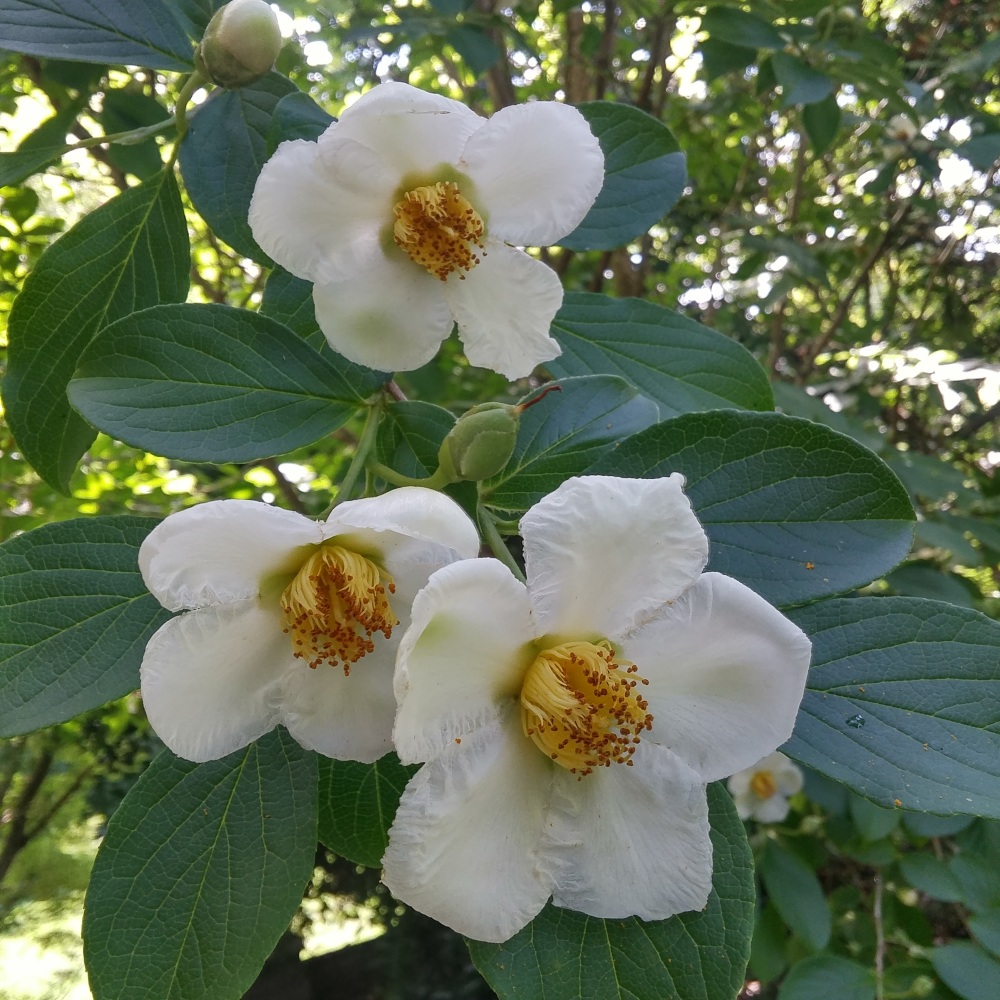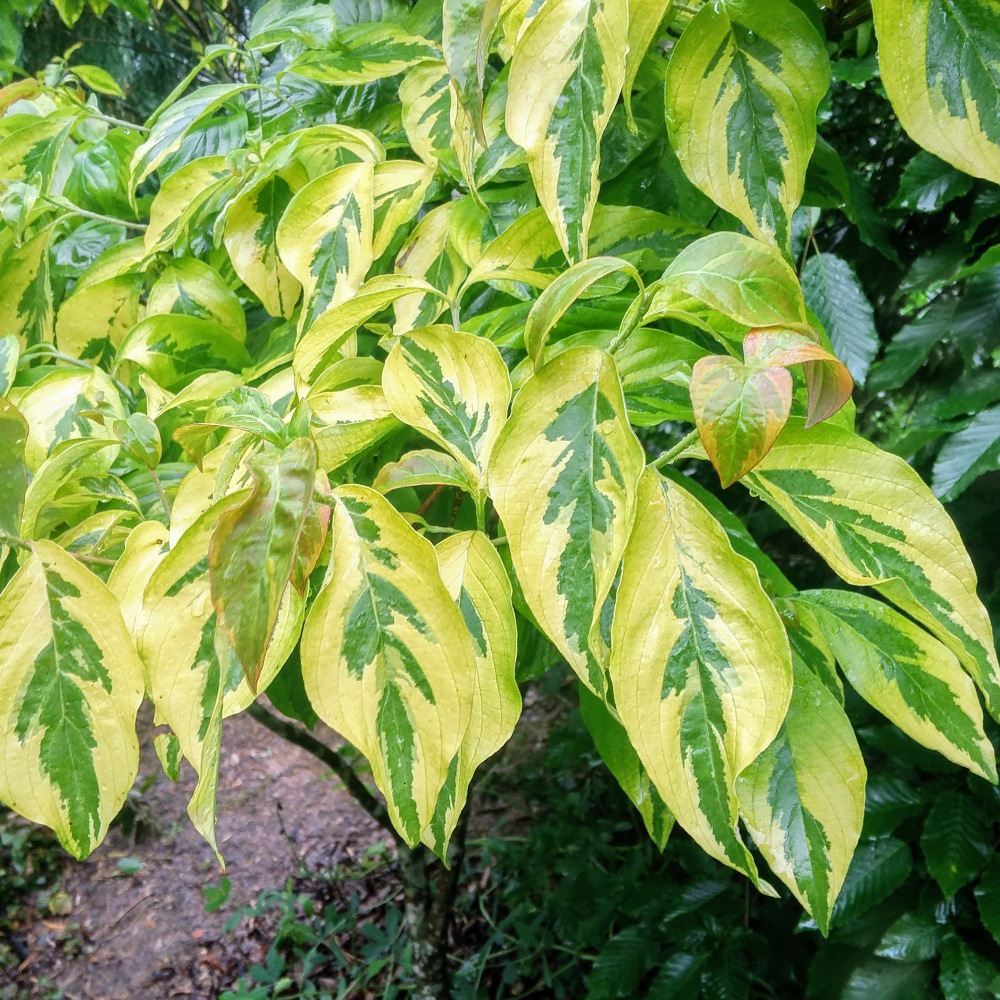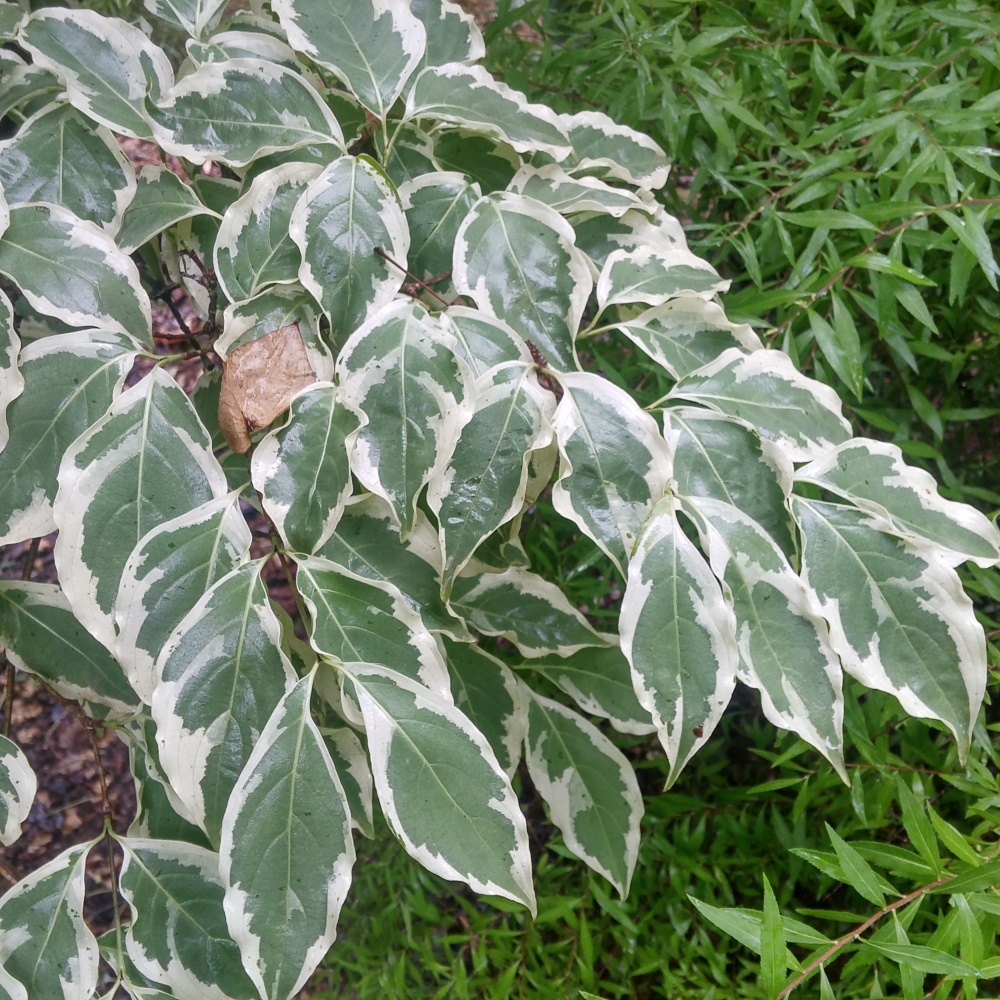In recent weeks, the stone path beneath the Japanese stewartia (Stewartia pseudocamellia, below) has been littered with white flowers. The tree is situated between evergreens and a wide spreading Japanese maple so that the top third is in full sun, while the lower portions are shaded. The effect is that the sunny parts begin to flower ten days earlier than parts in shade, with flowering extending through much of June.
Stewartia is slow to become established, though not nearly as slow as several European beech (Fagus sylvatica) that seemingly stood still for five years before growing. After a few decades, a purple leafed beech and a green leafed version with pendulous branches have grown huge. While stewartia is a smaller tree, it has also grown to maturity. Unfortunately, it is crowded by neighbors so that it cannot be fully appreciated for its blooms, or its autumn foliage color and attractive bark.
Less appreciated is the Goldenrain tree (Koelreuteria paniculata, above) with a more prominent position along the driveway. Goldenrain’s foliage is pleasant enough, though lacking in significant autumn color, and flowers are quite nice if the gardener is not aware that each is pollinated to develop a seed that is guaranteed to germinate. Perhaps if the goldenrain was planted with lawn beneath, it might not be such a pest, but with fertile soil the gardener must pull many thousands of seedlings. I’ve been tempted many times, usually while plucking a few hundred seedlings, to chop it out and be rid of it, but it is the rare gardener willing to part with a mature tree.
The foliage of ‘Celestial Shadow’ dogwood (Cornus x ‘Celestial Shadow’) is distinctly variegated through the spring, but this begins to fade in the first summer heat. The yellow-green variegation of ‘Cherokee Sunset’ (Cornus florida ‘Cherokee Sunset’, above) is similar, and this color holds better if the foliage remains clear of powdery mildew, which is rarely the case. With one of each in the garden, the easy choice is ‘Celestial Shadow’, which is a more dependable bloomer and not troubled by the various maladies that afflict our native dogwoods.
The Chinese dogwoods (Cornus kousa) faded from bloom earlier in June, but two with variegated leaves, ‘Samaritan’ and ‘Wolf Eyes’ (above) stand out in the garden. Probably, variegated trees (as well as shrubs and perennials) can be overdone, but to my eye that point has not been crossed, no matter what anyone else might think.
I am equally enchanted with two variegated ‘Silver Cloud’ redbuds (Cercis canadensis ‘Silver Cloud’, above) which have managed through multiple minor surgeries following snow and ice damage. Pendulous branching hides these defects, and along with the dogwoods the variegated foliage stands out even if there was not a single flower in the garden through the summer. Improved cultivars of the redbud feature more colorful foliage, and I would be tempted by a recent introduction, ‘Carolina Sweetheart’, if a spot opened in the garden.
Have you every tried planting an Akatsuki Dogwood? According to the ads, they are exceptionally beautiful. But I’ve bought and planted three, and they all died for some reason.
I’ve only seen Akatsuki in very small sizes. Satomi and other Cornus kousa dogwoods are much more easily transplanted than our native dogwoods, and they are also more drought and disease tolerant. However, planting small trees has a slimmer tolerance for watering errors, too little or too much. I’ve been forced to feed my Japanese maple addiction by planting some very small containers, but given my inattention I try not to plant anything smaller than a aone gallon pot, whether it’s a perennial or a tree,